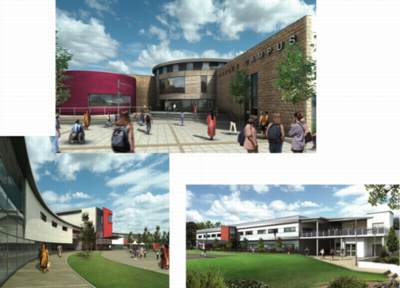Balancing the challenges and realities of integrated systems in 2008
David Epps offers a perspective on building controls that not only deliver balance-sheet value but that help companies deliver on their HSE and CSR policies.First and foremost, it is important to understand what integrated systems means. It is a term often shrouded in mysticism and lack of understanding. In its essence, integration means connecting all the various components in a building to provide a functionality that is difficult or impossible to achieve via separate systems. These systems are likely to include the various building controls, but can also extend to business tools such as personnel databases or EPOS systems. The connectivity allows intercommunication and the sharing of data. Common examples of systems that are ‘integrated’ include access and lighting controls, CCTV and HVAC. The actual systems involved should be determined by a client’s requirements and should provide client benefit through improving business value — something that has been overlooked in the past. By encouraging clients to be more consultative in their approach right from the very early stages of the project, a properly designed and unified solution can be developed where benefits can be achieved at all phases of a building’s lifetime.
Benefits Building Schools for the Future (BSF), the Government’s initiative to provide every school child with 21st century facilities over the next 10 to 15 years, is a perfect example of how building systems have come of age and how the reality of operating these systems is about assessing every need at an early stage and providing solutions that have relevance to all stakeholders, including the building manager. In order to understand what the building is, what the key operating parameters are and how it is to be used, it is essential to develop a close relationship with the client, professional team and the users and operators of the building to gain this necessary detail. Only then can the most appropriate solution be developed that meets the requirements of the various stakeholders. Lancashire BSF is committed to providing state-of-the-art technology. In total, £1.4 million is being spent across three schools and brings 21st century facilities to teachers, pupils and the community. Sustainability, energy and social responsibility are increasingly important issues, and pupils are becoming more aware of the pressing matters within society. Pupils want to know what the solutions are to creating a more sustainable future. This is the impetus behind the use of a renewable-energy display board across the three schools. This tool is a dynamic visual that shows the amount of energy being generated and the carbon emissions saved by fully utilising the renewable technologies.
Relevant solutions This revolution in thinking and awareness is set to bring building systems in line with the client’s and users’ explicit wishes and requirements, rather than finding compromise through the use of generic solutions. Essentially, rather than getting caught up in the technology that is on offer, the industry is now, first and foremost, aiming to offer the client real and directly relevant solutions to its needs. By investing the time in undertaking a true assessment of the needs and demands of the building at the design stage, the client can realise true business value through both the capital-expenditure and the operational-expenditure phases of the facility.

These three schools in Lancashire are exploiting the benefits of integrated building-control systems.
It is important to recognise that the pervasiveness of the Internet has very definitely benefited the world of building systems. It has allowed the universal use of an open, and easily understood network — one that everyone is now using, both in their work life and at home. Having a common network encourages the use of common languages to be used between the various systems and, hence, the ability to share data and report information in a consistent format. In other words we have ‘integration’. However, rather than get carried away with the excitement of new technology and all that it can do, perspective must be kept. Technology can now achieve most, if not all, of the requirements in a building, but it is only the means to achieve the ends — not the end itself. Without the necessary preparation and understanding of the solution that is required, the completed project will not achieve the client’s expectations or objectives and, hence, will be regarded as having failed. Quite rightly, clients have always looked for value-for-money solutions to their problems, and the potential slowing down of the economy only strengthens this further.
Energy issues Energy, sustainability and social responsibility are all key issues, and failure to understand their implications can have wide-ranging implications, including financial ones. One high-visibility issue at present is the ever-spiralling cost of energy. There is often big scope for reducing consumption, but to be able to do this, information of where it is being used and why must be available. This is where an integrated solution scores over the more traditional approaches. With access to data from a variety of sources, the system can not only report back on a regular basis but can also intelligently optimise and control energy usage without compromising the use of the building or inconveniencing the occupants.
David Epps is integration manager with TAC.
Related links:








